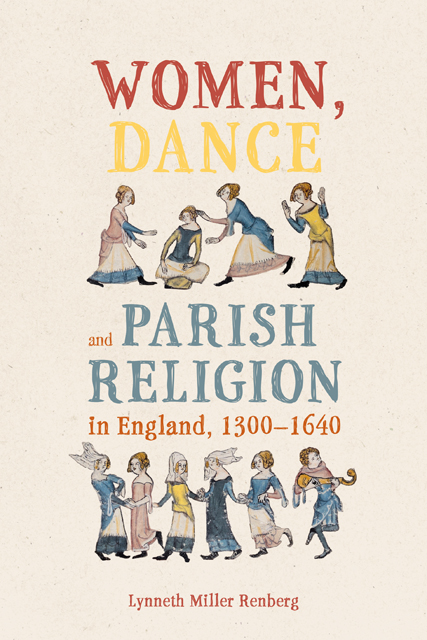Book contents
- Frontmatter
- Dedication
- Contents
- Acknowledgments
- List of Abbreviations
- Introduction
- 1 Reforming and Redefining True Religion
- 2 Dance and Protecting Sacred Space
- 3 Dance and Disrupting Sacred Time
- 4 “Satan Danced in the Person of the Damsel”
- 5 “In Her Dance She Had No Regard Unto God”
- 6 Performing Dance, Sin, and Gender
- Conclusions
- Appendix
- Timeline
- Bibliography
- Index
- Gender in the Middle Ages
4 - “Satan Danced in the Person of the Damsel”
Published online by Cambridge University Press: 17 December 2022
- Frontmatter
- Dedication
- Contents
- Acknowledgments
- List of Abbreviations
- Introduction
- 1 Reforming and Redefining True Religion
- 2 Dance and Protecting Sacred Space
- 3 Dance and Disrupting Sacred Time
- 4 “Satan Danced in the Person of the Damsel”
- 5 “In Her Dance She Had No Regard Unto God”
- 6 Performing Dance, Sin, and Gender
- Conclusions
- Appendix
- Timeline
- Bibliography
- Index
- Gender in the Middle Ages
Summary
Through a fixation on sacrilege – on protecting sacred spaces and times from profane bodies – vernacular authors shifted the status of both women and dance within the late medieval and early modern parish. Dance and women were both reframed as sacrilegious threats to true belief. But how and when did sexuality become the primary focal point of concern, as it had by the late sixteenth century? For indeed, as vernacular authors connected dance more closely to female bodies, the sexual potential of those bodies became more important. This sexualization of dance took place, like the transformation of dance into sacrilege, gradually. Yet it is important to note that the sexualization of dance, while always a secondary concern for religious authors, became a primary concern only after dance had become clearly defined (like women) as sacrilegious. The transformation of dance into sacrilege started in the eleventh and twelfth centuries; the sexualization of dance in the English parish began in the thirteenth and fourteenth centuries.
Perhaps the clearest example of this transformation from sacrilege to sex appears in the reworking of Salome, the young dancing girl mentioned in the biblical accounts of the death of John the Baptist. Embedded into the gospel accounts of Matthew and Mark, this brief episode is perhaps the best-known biblical narrative associated with dance, both in the Middle Ages and in the present. In the narrative, King Herod has taken his brother’s wife as his own, an action for which John the Baptist rebukes him, in accordance with Levitical law. For this, Herod and his wife Herodias have John the Baptist arrested and thrown into prison. While John the Baptist is imprisoned, Herod holds a feast (according to medieval interpreters, a birthday feast for himself) at which his young stepdaughter (traditionally referred to as Salome, although unnamed in the biblical text) dances before the guests. Herod is so well pleased with her dance that he makes an oath: to give Salome whatever she asks, up to half his kingdom. Salome consults with her mother Herodias, who urges her to ask for the head of John the Baptist. Salome does so, and Herod, bound by his hasty oath, regretfully beheads John the Baptist, delivering the head to the girl on a dish.
- Type
- Chapter
- Information
- Women, Dance and Parish Religion in England, 1300-1640Negotiating the Steps of Faith, pp. 105 - 130Publisher: Boydell & BrewerPrint publication year: 2022



